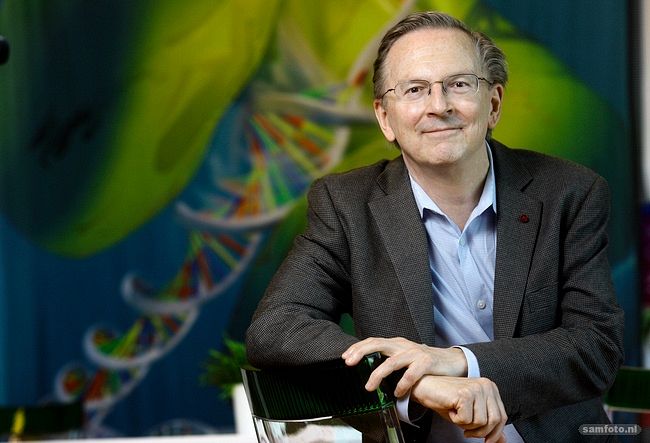Nobel laureate Professor Jack Szostak from Harvard Medical School visited the Kavli Institute for Nanoscience last week. He explained how chemistry might have come alive in volcanic lakes.
“Once you have a single strand of RNA, and you’ve been able to copy it, you have a duplex: a double-stranded RNA molecule. You need to get those strands apart so they can be copied again. The simplest way to do that is by heating the RNA up. But, of course, RNA is a rather delicate molecule. You don’t want to cook it for hours, or you’ll have nothing left. The ideal situation would be to have some physical process with a very rapid rise in temperature in a few seconds up to 90-95 degrees, but then very quickly drop back down to a colder temperature.
If you look around at nature and try to see some physical situation where that happens, there’s only one that I know of, and that is a hydrothermal vent in a shallow lake or pond. My favourite example, and one of the best studied is Lake Yellowstone in the western US. There is a magma chamber underneath as a source of heat that drives groundwater circulation. The water goes into the ground, gets heated up and comes up through these vent structures. You have streams of hot water coming out and then being dispersed in the rest of the lake.
If you imagine a situation like that on the primitive Earth, you can imagine cells floating around in the cold water of the lake. Now and then they get caught up in these streams of hot water. They’d be heated up very quickly to a high temperature that would allow the RNA strands to separate. It would also allow nutrients to flow into the cell. But then the cell would not stay hot for very long. In a few seconds, it will flow back out and mix with the surrounding cold water. It’s the fluctuations in the environment that drive the primitive cell cycle.
There are different processes involved in this with different time scales. The geological processes, setting the stage for the right geology, certainly took many millions of years. After that, for the Earth to accrete volatiles, to have water and land above the oceans probably took millions of years.
Then to get to the chemical concentrations needed may have taken tens of thousands of years. But once you start building up the molecules into more and more delicate structures, we are talking shorter time scales of weeks, months or years.
Once you get to the point of making membranes and RNA molecules – RNA, in particular, is very delicate – then we must be talking about timescales of days at most. Once you have all the ingredients in the right environment, the actual construction of the first cells that could grow and divide may have been very fast – in the order of hours or days. Once there is the formation of life, then things start to develop very quickly.”
Download Transcript of full interview



Comments are closed.